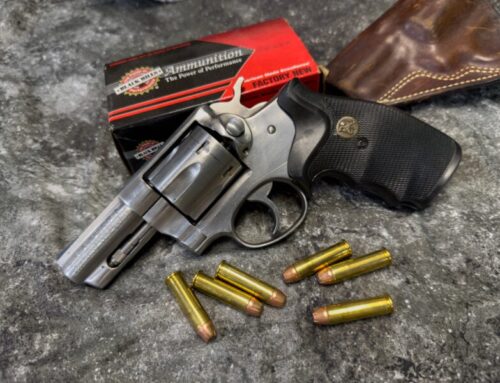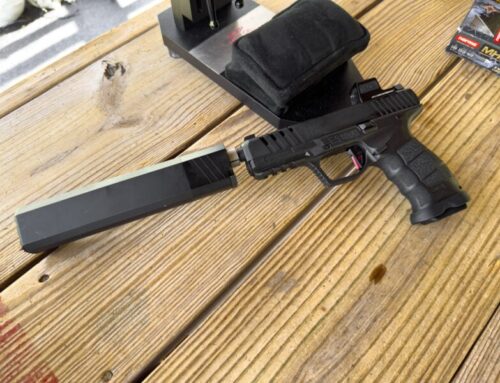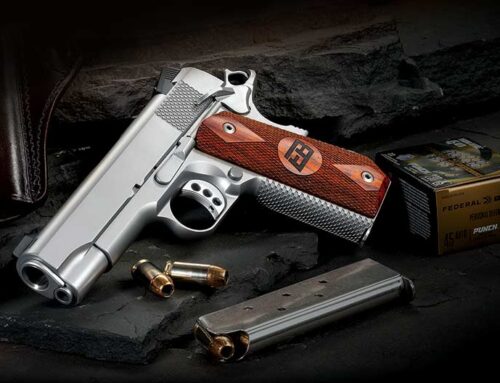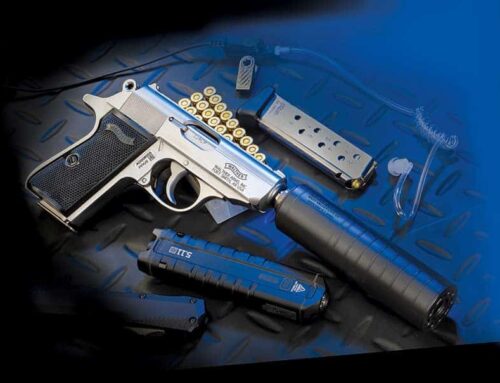
Smith & Wesson’s M&P15-22 Performance Center Rifle
“Breathtaking. I shall call him… Mini-Me.”
Dr. Evil, The Spy Who Shagged Me
While the dimensions of the Smith & Wesson M&P15-22 Performance Center rifle are not ⅛ the size of a “real” AR-15 type rifle, you can think of this gun as a “Mini-me” to a 5.56mm / .223 Remington AR-15, at least in terms of weight. The .22LR model weighs in at 5.6 pounds while it’s roughly equivalent 5.56mm M&P comes in at about 6.85. That’s for the M&P15T that comes equipped with a quad rail and removable sights like this M&P15-22 Performance Center.
But weight isn’t the driving design goal of this rifle. The thing I like most about it is that it operates just like it’s much louder sibling. As much as can be, given the different modes of operation between the .22LR blowback design and the direct impingement gas system of a “real” AR-15, the controls are where you would expect and they do similar things. The two-position safety has “safe” and “fire” modes and is located on the left side of the lower receiver. The magazine release is right where you would expect, and it drops the magazine out freely without the need to tug on it. Also on the left side, the bolt catch and release button operate just like the real thing. Oh, and the charging handle is legit too. I mention these details right up front as many AR look-a-likes chambered in .22LR have cosmetic and non-functioning features.

Unlike other .22 caliber AR rifles, the controls actually work.

Other than being made of polymer, the charging handle looks and operates like the centerfire version.
If you’re looking for a .22LR that can serve as a practice and training tool, or you just want it to operate like the big brother, this is your Huckleberry. Even now, with all the griping about price and availability of .22LR ammo, you can buy rimfire rounds for eight cents each, give or take. 5.56mm and .223 Remington will still cost you upwards of 25 cents or so.
Smith & Wesson makes a few different M&P15-22 variants, so let’s spend a minute on the differences of the Performance Center model we’re talking about here.

This one had a quad rail setup although the newest catalog shows an M-Lock rail.

The barrel is not free floated. Here you can see how the barrel supports the hand guard.
The Goodies
As a Performance Center model, you might expect some premium upgrades, and there are. Some are production differences while others boil down to upgraded third party components.
The biggest difference you’ll notice is the barrel. It’s 18 inches long compared to the 16.5-inch version on the standard M&P15-22 Sport model. It’s not free floated – the front of the handguard is supported by the barrel itself. You’ll also notice longitudinal fluting on the exposed portion of the barrel in front of the hand guard.

The Hogue pistol grip is a nice touch.

I really like the inclusion of the VLTOR six-position stock.
The heavier bull barrel on this PC variant doesn’t come with a flash hider or muzzle brake. Instead, it comes out of the box with a thread protector only. That’s just fine with me as this rifle screams for a suppressor. That’s easy to do as this rifle comes with standard ½x28 threading. If you’re going to suppress this gun, be sure to read the “Shooting Suppressed” section later in this article.
The handguard on my sample is a 10-inch polymer quad rail version with large ventilation holes along the 45-degree positions. The latest model of the M&P15-22 Performance Center on the Smith & Wesson website features a 10-inch M-Lock rail. Since it appears that the hand guard type may have changed at some point during production, you might find either variant out there in stores. If you choose to order one online, just check to see what’s coming in case you feel strongly one way or the other.







Leave A Comment